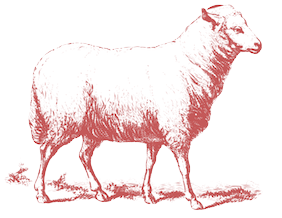Let's have a conversation about Brie.
But before we talk about Brie in specific, we should take a moment to understand something about cheese in general: while there are a zillion types of cheese in the world, nearly all of them fall into basic categories, or "families." These families attempt to group cheeses together based on a common quality not shared with other cheeses. For example, blue cheeses must have their distinctive blue mold; cheddars have their essential "cheddering" process to help define them; there is the pasta filata family of fresh cheeses that are heated and stretched, like mozzarella. The list goes on...
Brie is perhaps the most abused cheese name in all of the cheese-making and cheese-eating world. It seems that "brie" in North America has become the de facto name for any cheese with a white-mold exterior. The reality is, that Brie is not a family of cheese, but rather it falls into a family called "bloomy rind" or "soft-ripened" cheese. Brie is a soft, creamy, cow's milk cheese made using specific techniques in a specific part of the world. Here at Many Fold Farm, three of our cheeses fall into this category. So when someone asks us at a cheese tasting or at a farmers' market if our Garretts Ferry is a Brie, and then asks if the Rivertown is a Brie, it creates some confusion. How can two distinctly different cheeses both be Brie? Well, that's because neither of them are.
Brie is a bloomy-rind cheese made in the Brie region of France. It is AOC protected, meaning that anyone who is not making Brie in accordance with the AOC standards (within the EU) cannot call their product "Brie." Of course, that doesn't stop anyone outside the EU from calling their cheese "brie." Most "brie" made in or for the United States is characteristically smooth and uniform in texture with a thick, white rind, and a very mild, creamy taste. One would not be wrong to call the paste "bland" due to its mandatory pasteurization and short aging period, or the rind "unpalatable" due to its cakey thickness (often, when brie is served at cocktail parties, you see a picked-over cheese plate with a disemboweled shell of rind with bits of gooey paste smeared all over where folks have unceremoniously scraped out the poor cheeses' innards!). Sometimes, though, American cheesemakers make a soft-ripened white mold cheese with a gooey, creamy, smooth paste that is in the style of Brie, but is, to my mind, worlds better tasting. Sweetgrass Dairy's famous Green Hill is an outstanding example, as is Jasper Hill's Moses Sleeper.
So when you're at the grocery store or farmer's market and you're looking for "brie" to serve at your next cocktail party, or you've got one of those recipes for baked Brie in pastry, don't go with the bland "wannabe brie." Get something original and American; something that respects the cheesemaking traditions of a place and that does not attempt to be a re-place-ment. And for heaven's sake! Don't call it Brie!
